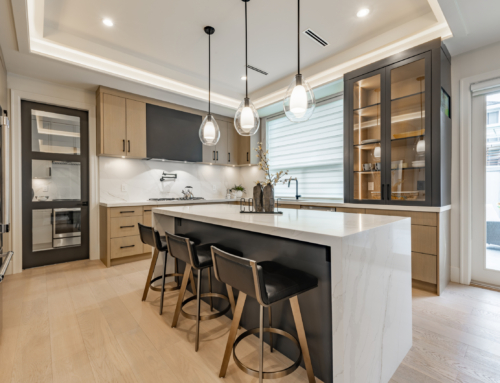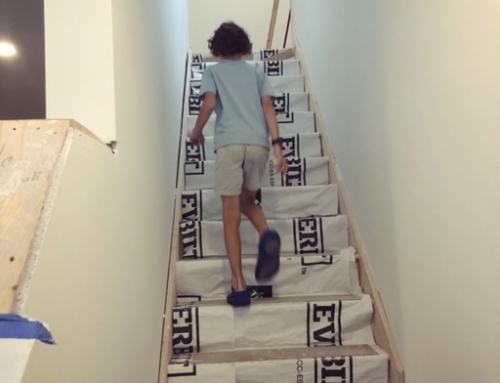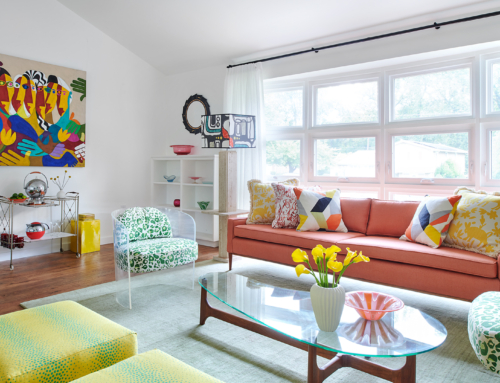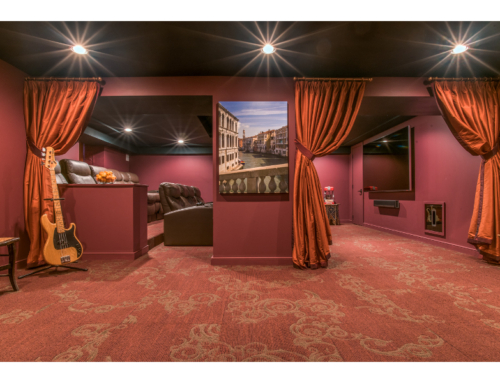Tamara Attended the Sustainability Tour on 8/13/09
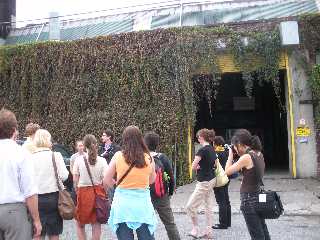
Yes they really do recycle what we put out for curb side recycling – I saw it with my own eyes!!! Right here in Philadelphia Grays Ferry neighborhood at Blue Mountain Recycling. This private company has the sole recycling contract with the city of Philadelphia and handles many other regional municipalities as well. The 60,000 sq. ft facility is impressive and is in fact capable of handling much more. Right now Philadelphians only divert to recycling under 14% of our waste, more aggressive cities turn 25% to 30%. Our tour had a chance to watch live video feeds of the plant and get a primmer on how their facility works. For those of you who haven’t seen how the sorting and bailing works they have a video posted – you just have to watch past the comedic reenactment of a family’s frustration prior to single stream recycling, then the video turns into tour of a facility.
I had a chance to ask the folks at Blue Mountain if there were one thing that could help their process go faster, more efficient and cause less wear on machines and the answer was: “Keep the plastic bags out of your single stream recycling in Philadelphia.”
For those of you that know me and my recycling geek ways — shamelessly pulling recycling out of trash, picking up bottles and cans off the street, prowling our neighborhoods with my pick up to pick up friends’ recycling — know that this is an issue that I have carried for decades. So I was thrilled that this was our first stop on the Sustainability Tour I took yesterday.

One view of Blue Mountain Recycling - looks like a cool vine covered warehouse
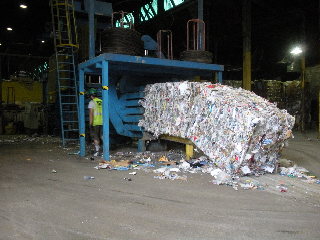
Some finished product inside the Blue Mt. warehouse- paper all sorted & baled into 1 ton blocks ( my dad
Thanks to Into the Open: Sustainability Tour put together by The National Constitution Center in conjunction with the Slought Foundation and Community Design Collaborative and it seems lots of other great folks. They have joined together to create a series of programs, events, talks, shows called “Into the Open.” We were lucky enough to have the wonderful resource of Christine Knapp of Pennfuture.org to narrate our open air trolley trip. Christine works in so many ways for the sustainability community and her main gig is at Penn future – check out the amazing work they are doing to help join all the groups of our area together toward common goals.
Our second stop was the west Philly urban farm, Mill Creek Farm. They have an impressive program engaging and growing food for the neighborhood. This small urban farm is a great example of the type of system that will be needed many fold for the new ambitious goal set by in Major Nutter’s Greenworks Plan to be the Greenest City in America. This plan includes bringing fresh food to within 10 minutes of 75% of residents. Check out Mill Creek Farm web site to see how you can help – in the immediate they need help in gathering support to make sure the land they are working is not taken by developers.
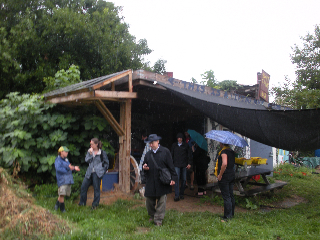
Besides plantings and bee hives, Mill Creek Farm has a small building with storage, a composting toilet, adorned with solar panels, and a living roof.
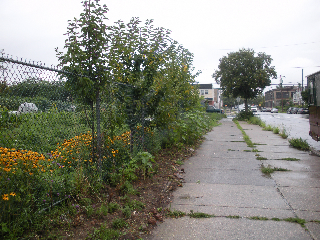
Mill Creek Farm is urban, row homes and warehouses are the neighbors.
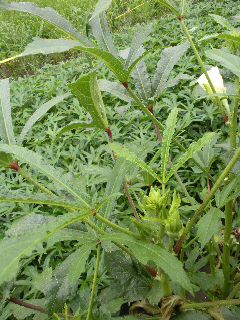
Ok - Mill Creek Farm's okra is looking way better than mine!!
Last stop was the Fairmount Water Works. A brief sustainability tour like this would not be complete without a focus on water, and especially the need to aggressively change the impervious nature of our cities. Fairmount Water Works is a great place to get a sense of the long history of Philadelphia’s treatment of water, and the various versions of its water works. Lots of interactive stuff for kids here, and for folks like me who sometimes get wrong ideas about our water. When I was doing a school project years ago for Drexel’s Architecture program I thought they taught us that the dam created a break between the Schulkuyll fresh and brackish water coming up from the Delaware bay – yesterday I found out that is not true, the water is fresh but it is tidal. And because of the many years of working on our water it is supporting life, fish can now be seen jumping along side of the water works. The river’s tidal nature and the flooding had affected the engineering of the older water works but also how the the current exhibits inside the old water works buildings are designed – exhibits are on pulleys to quickly be raised, electronics are designed to be disconnected easily, they can flood proof the center in two hours. Lots more to see here, I’ll have to ride my bike back over!
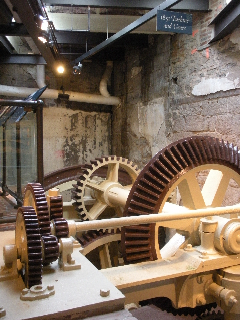
Fairmount Water Works - 1851 Turbine and Gears
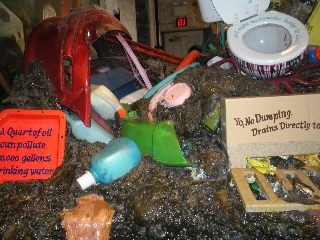
A really yucky large plastic teaching model showing all the gross stuff we are NOT to put down our drains and storm drains
Into The Open has an exhibit that is still up at the Constitution Center. I had the chance to attend a lecture last week as part of the series as well as the Sustainability Tour I talked about above. The program seeks to pull together from multiple sources all over the country representations of how alternate groups are engaging communities and cities, how they are looking at designing, architecture, and planning as something other than single buildings. Thinking instead more of constructs that while they may include some built environment usually think beyond buildings or traditional city planning. Some involve community in planning, some plan for community, some just plan on paper and models, often the process is as much a part of the finished product as the building or physical place. The exhibit features the work of 16 architectural firms of wide ranging types – from grass roots design/builders from the Rural Studio in Alabama to the more academic focused Center for Urban Pedagogy in Brooklyn.

